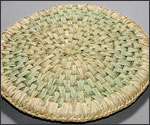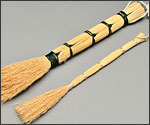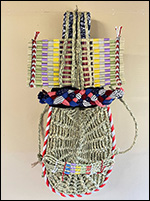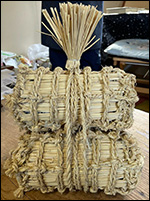Wara-zaiku (Straw Crafts) (Tsuruoka City)
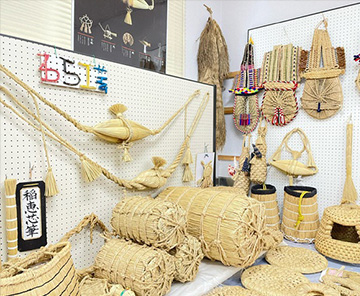
History/Outline
Local straw culture and ancestral straw crafting techniques are symbols of Fujishima's organic agriculture.
With Japanese rice cultivation's history extending back over 2000 years, people's lives have long been protected and nurtured by straw culture and crafts. In 1985 the Fujishima branch of the Shonai Tagawa Agricultural
Cooperative organized two movements to further investigate local agriculture: an organic agriculture research group and a straw crafts study group. They are currently trying to transmit straw crafting techniques to local children, along with
organizing the 20th Japan Straw Culture Festival and international exchange programs with France and Taiwan.
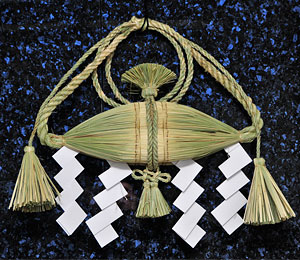
Techniques/Characteristics
Simple handworking techniques are carefully transmitted, paying careful consideration to each individual blade of rice straw
Local rice straw is taken from organically grown rice; all steps of the harvesting process, from picking to drying, are done by hand.
The material uses Sasa-nishiki rice for its elastic nature, adding age-old methods of selecting, twisting, knitting, bundling and tying the strands. Products include Shime-nawa (sacred straw rope for shrine or festivity), Mushiro (straw mats), Yuki-gutsu (snow shoes) and Waraji (traditional straw sandals), all of which used to be traditionally used in daily life.
The material uses Sasa-nishiki rice for its elastic nature, adding age-old methods of selecting, twisting, knitting, bundling and tying the strands. Products include Shime-nawa (sacred straw rope for shrine or festivity), Mushiro (straw mats), Yuki-gutsu (snow shoes) and Waraji (traditional straw sandals), all of which used to be traditionally used in daily life.
Main Products
●Enza (Round Straw Cushion) ●Wara-fude (Writing Brush made from Straw) ●Neko-chigura (Cat House) ●Mingei-hin (Folk Crafts) ●Waraji (Straw Sandals)
